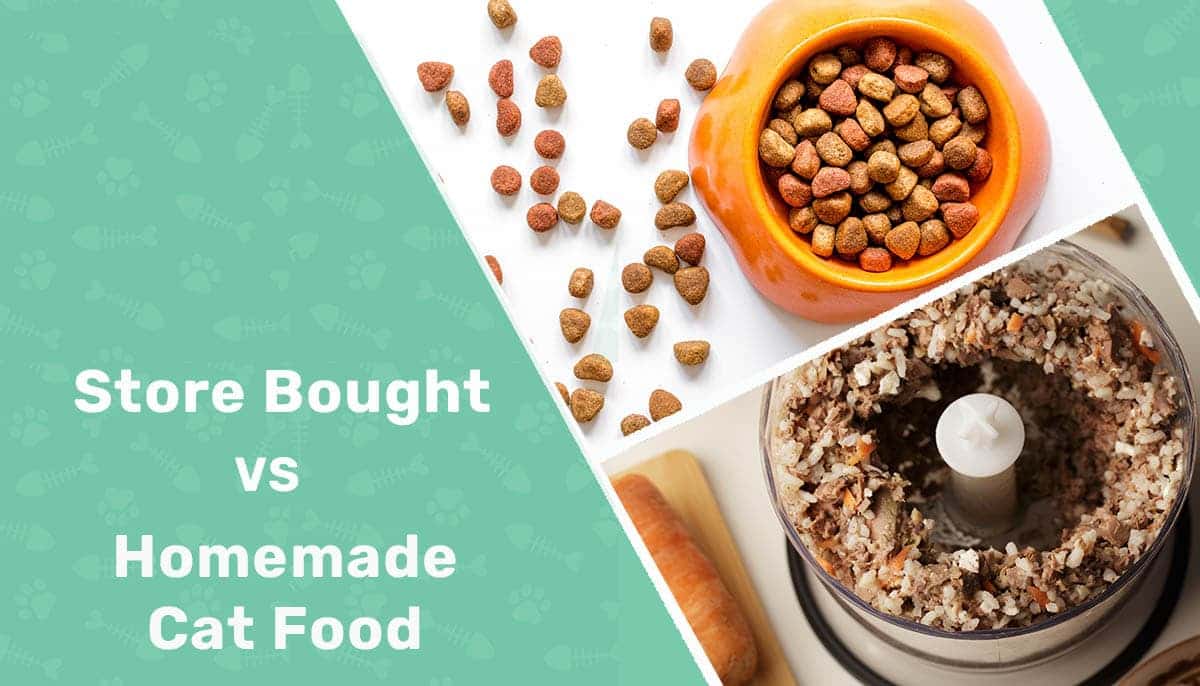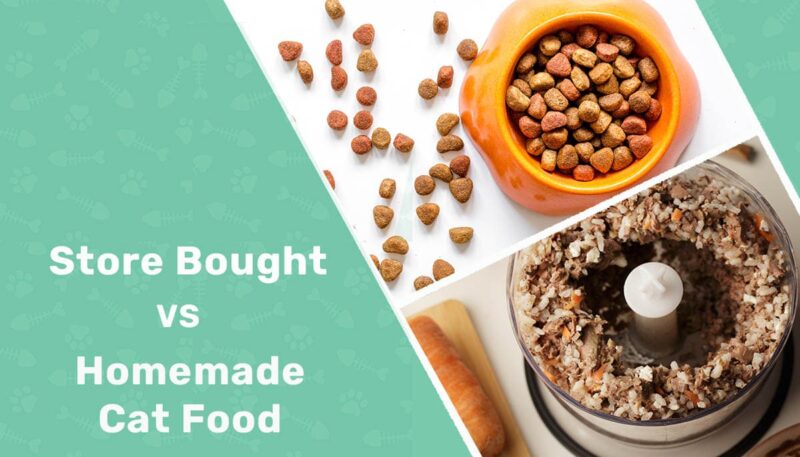Even though hundreds of store-bought cat food options are on the market, many owners want to make homemade cat food for their cats. Whether it’s because it feels more personal or they believe it’s healthier, it’s not uncommon to want to cook for our pets. Is there a notable difference between these two options? Is one healthier or safer for your cat? Here’s what you need to know!
At A Glance
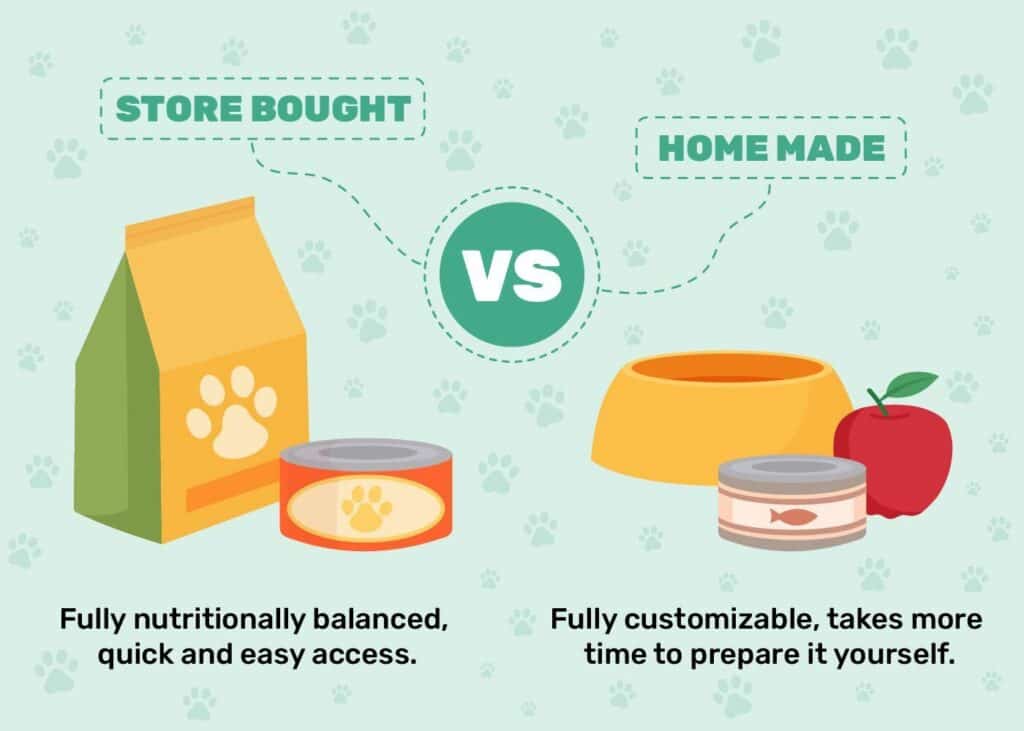
- Nutritionally balanced
- May be formulated by a board-certified veterinary nutritionist
- Subject to quality control practices
- Numerous formulas available
- Customizable
- Options available for board-certified veterinary nutritionists to formulate
- Human-grade ingredients are subject to quality control practices
- Variety is dependent on ingredient availability
Overview of Store-Bought Cat Food
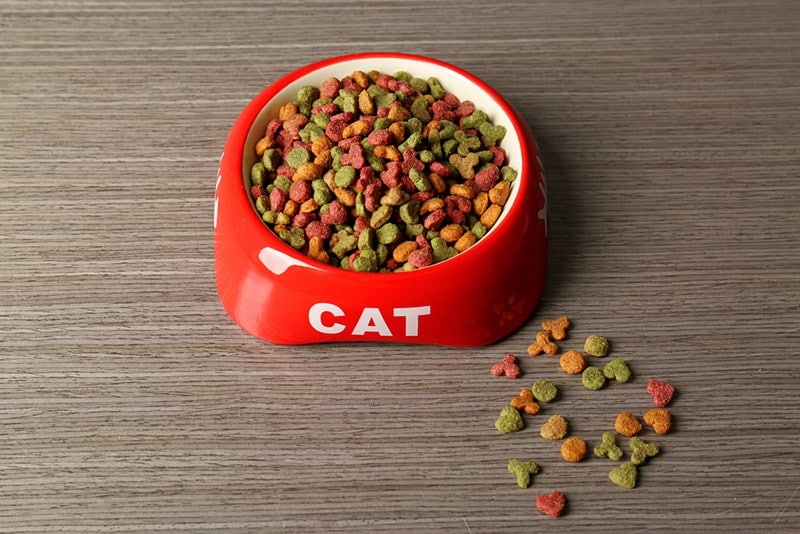
What Kind of Variety Is Available?
Store-bought cat food provides you with a wide range of options. Cat food comes in many textures, including dry kibble, freeze-dried bites, pate, and more. If you’re interested in a homemade-style or raw diet for your cat, commercially available foods are more nutritionally balanced than most people can make at home. Store-bought cat food has flavors and ingredients that suit even the pickiest cat. There are also formulas available at every price point.
Good For:
Commercial brands include recipes for all cats, regardless of age, breed, and health status. Some formulas are designed for indoor cats, specific breeds, cats with urinary tract problems, and felines that require prescription diets. With the variety of textures and flavors available, you can find something your cat likes, regardless of their preferences.
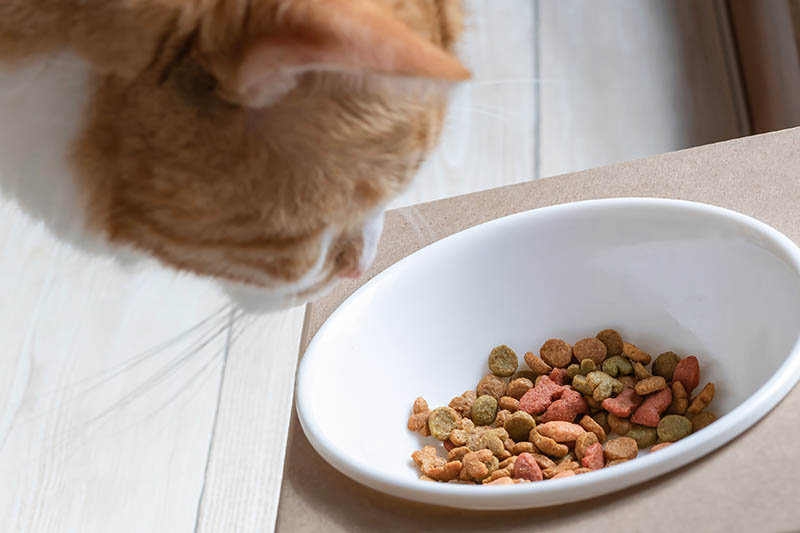
Safety Considerations
While store-bought pet foods sometimes get a bad name because of recalls, most recalls are voluntary. The companies identify a problem and pull products as soon it becomes evident, saving the lives of pets that would otherwise have been impacted.
Factories manufacturing cat food are subject to multiple regulations and quality control practices. Your cat will get a nutritionally complete and balanced diet, and you can feel confident knowing that the odds of your cat being safe are excellent.
However, some owners oppose commercial brands because they’re concerned about the ingredients. Some brands add fillers to their products in the form of carbohydrates (which cats don’t usually need in the amounts found in such foods).
- Fully balanced, often through board-certified veterinary nutritionists
- Many textures, flavors, and diet types are available
- Suitable for all cats
- Subject to quality control and safety regulations
- All price points available
- May experience recalls
- Nutritional quality varies by brand
- Often doesn’t feel natural
Overview of Homemade Cat Food:
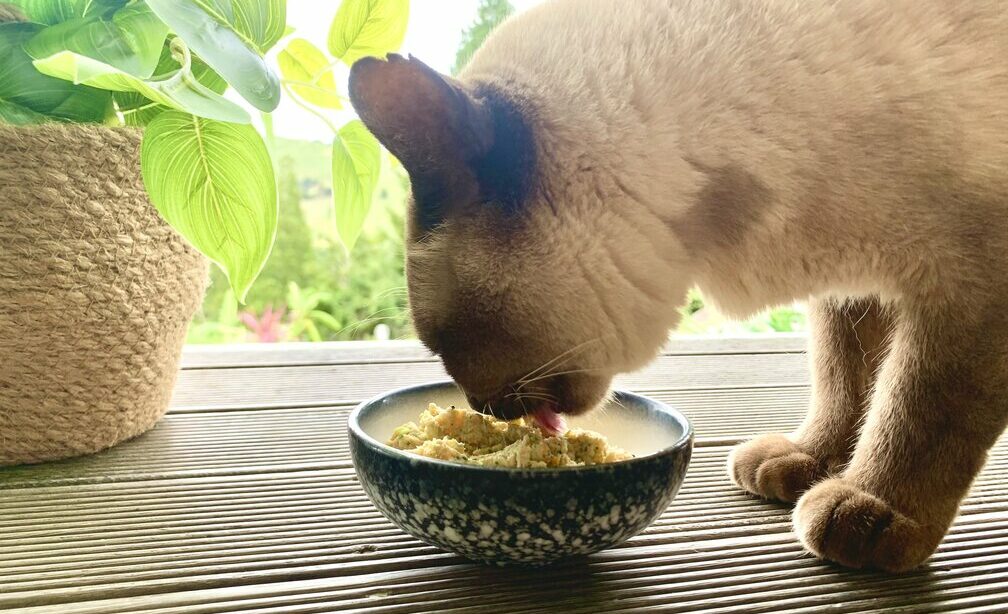
What Kind of Variety Is Available?
The great thing about homemade cat food is that you can customize the diet to suit your cat’s preferences and needs. You can pick proteins that your cat likes, but you will be limited to what’s available in your area. If your cat likes dry food, you’ll struggle to make something suitable at home.
It may also be difficult to achieve different wet food textures. Homemade cat food is challenging to properly formulate on a tight budget, so it isn’t ideal for people with a limited pet food budget.
Good For:
Homemade cat food can be suitable if you’re an owner who has talked to a board-certified veterinary nutritionist or your vet about your cat’s nutritional needs. Cats that like wet and meaty foods can be appeased with homemade cat food. If your cat is a kitten, is elderly, or is experiencing a health condition, preparing homemade food will give you the flexibility to create a diet that meets their needs. However, it’s advisable to have a professional assist in developing the diet to fully meet your cat’s needs and prevent nutritional deficiencies.
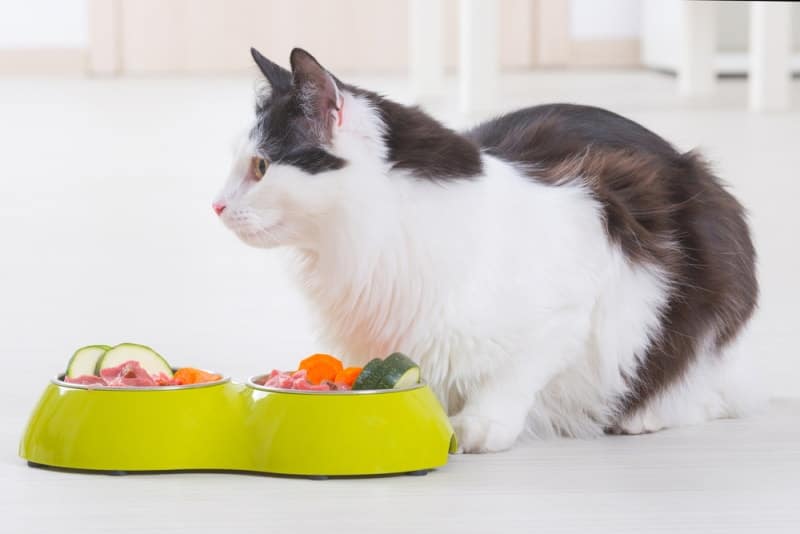
Safety Considerations
Regarding safety, homemade cat food can be very hit or miss, especially if you feed your cat a raw meat diet. Commercial meats may also have different nutritional yields depending on the animal’s age, the cut of meat, and the source of the meat. Most vets consider a homemade diet somewhat risky due to the difficulty of adequately balancing the ingredients.
If you’re feeding your cat a raw diet, there is a risk of food-borne illnesses being passed from your cat to your family. Immunocompromised, elderly, and very young people are especially at risk. Cats intended to be used as emotional support animals cannot be placed on a raw diet for legal reasons since they’re often close to people who aren’t healthy.
- Can be customized
- Many ingredients available to meet your cat’s preferences
- Can be formulated through a board-certified veterinary nutritionist service
- Can meet the needs of many cats
- Good option for cats that like wet and meaty foods
- Difficult to make on a budget
- Difficult to properly balance nutrients
- Safety risks
Which Is Healthier for Your Cat?
Homemade and store-bought cat foods can be equally healthy for your cat. The benefit of store-bought food is that it meets the minimum required standards for cat nutrition (but check for labels that mention compliance with established standards by regulatory bodies where you live). Many brands also meet the World Small Veterinary Association (WSAVA) global nutrition requirement recommendations, so you can feel confident knowing the nutrition is excellent.
The WSAVA approval isn’t mandatory for a brand to sell cat food, but compliance with local regulations is. For example, U.S. cat food brand formulations claiming to be nutritionally complete must meet AAFCO requirements.
Many underestimate how difficult it is to balance a homemade pet food diet. While it may seem like you can cook meat and give it to your cat, there is a very careful balance of nutrients needed, which are obtained through food and supplements. Specially formulated diets can be obtained through special services that allow a board-certified veterinary nutritionist to formulate your cat’s food, but the services can be pricey, and following the recipes exactly can be difficult.
You also need to consider the risk of foodborne illnesses that can come with homemade diets, especially raw diets. Commercial cat foods meet various safety standards, and while incidents occur, they occur at very low rates compared to the amount of food produced daily.
Improperly prepared homemade diets can harm your cat, and raw ingredients (especially raw meat) can be very dangerous when handled inappropriately. However, the risk can be mitigated by actively sourcing ingredients from butchers or suppliers that meet high hygiene and safety standards.
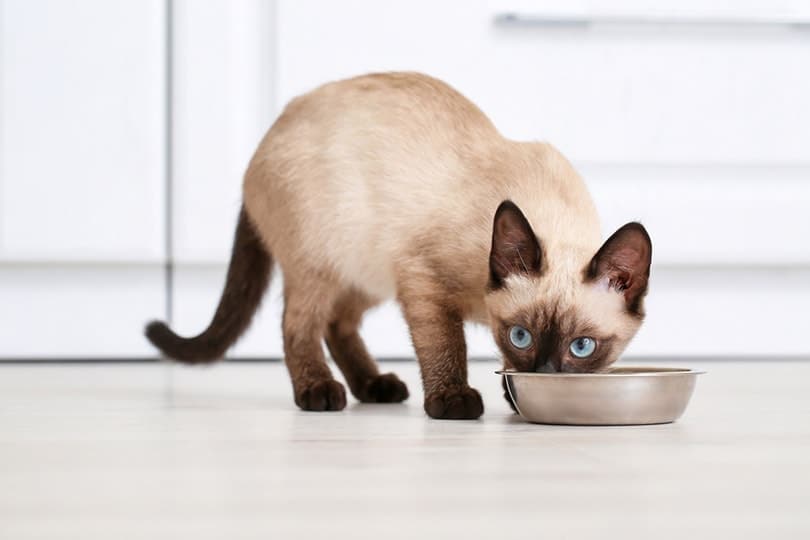
How Much Food Does My Cat Need?
The exact amount of food that your cat needs every day is extremely variable based on their age, size, current and ideal weight, activity level, and health status. Your vet can help you determine how much your cat should eat daily, but if you’re feeding them store-bought cat food, the feeding suggestions on the package are a great starting point for most cats.
WSAVA, the global pet nutrition committee, has a feeding chart explaining how many calories per day an adult cat needs at an ideal body weight. There are multiple calculators available that can also help you determine how much your cat needs. Most adult cats need between 180 and 300 calories per day. If you’re working with a professional to create a homemade diet regimen for your cat, they can help you determine how many calories your cat needs.
It’s important to remember that your cat’s diet may need to be adjusted, whether homemade or store-bought. Weight gain or loss, medical conditions, aging, and changes in activity level can all impact how much your cat needs to eat.
Regardless of your cat’s needs, their daily diet should consist of at least 90% meals. No more than 10% of the daily diet should consist of treats, and if your cat is overweight, they likely need significantly less than that. All table scraps and food taken from other pets should also be counted.
By keeping their treat intake low, your cat will have a better chance of maintaining a healthy body weight, helping prevent health issues that can occur with obesity. Treats are also usually not as nutrient-dense as cat food, which should be your cat’s primary source of nutrients.

Conclusion
In most situations, store-bought cat food is safe and nutritionally sound for your cat. However, homemade cat food can also be healthy and safe when prepared and handled correctly. Homemade diets can be very difficult to balance properly, and the help of a professional is vital to ensure the formula is complete.
Commercial cat foods are usually formulated to meet at least the minimum nutritional needs of a cat, but despite their popularity, they aren’t considered ideal in the minds of some owners. Ultimately, this is an important decision that shouldn’t be taken lightly, and it requires considerable thought and dedication.
Featured Image Credit: (L) 279photo Studio, Shutterstock | (R) 8H, Shutterstock

